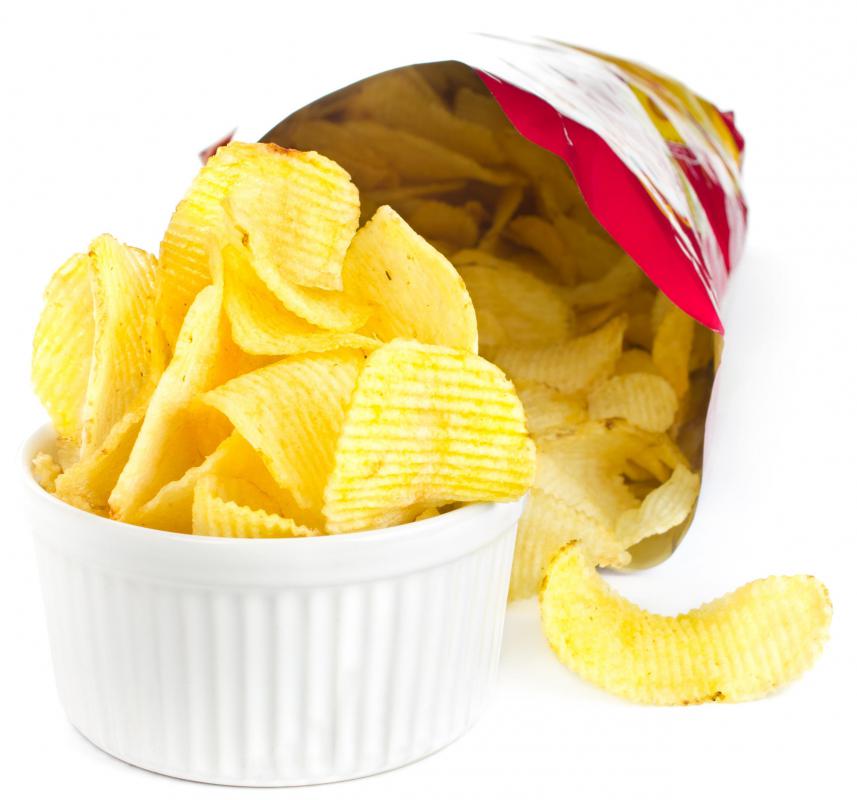At WiseGEEK, we're committed to delivering accurate, trustworthy information. Our expert-authored content is rigorously fact-checked and sourced from credible authorities. Discover how we uphold the highest standards in providing you with reliable knowledge.
What is a Serving Size?
A serving size is a tool used by the United States Department of Agriculture (USDA) to measure amounts of food. On the nutrition labels stamped on most foods sold in stores, the serving size shows the nutritional information for the food. It will usually be a portion of the food labeled, and for that portion the amounts of vitamins, minerals, fats, and other things are indicated on the label. These labels are intended for comparing the nutritional information of different but similar foods. The nutrition facts represented per serving size include things like fat, sugar, calories, vitamins, protein, carbohydrates, and a number of other products of the food.
The serving size found on these labels represents the amount of food that one would normally eat in one sitting. This information is determined from nationwide surveys across the United States, and serving sizes are given in one of various ways. The methods of measurement include: cups and tablespoons for granular items; fractions for sliced items like pie or cake; numbers for grouped items like cherries or grapes; and grams for other grouped items, such as cereal.

Serving sizes tend to be generally smaller than most Americans will eat at one meal or one sitting, as many Americans tend to be unhealthy or at least slightly overweight. Examples include one cup of pasta; one cup of dry cereal; one hand-sized cut of steak; one half cup of milk; one fourth of a chicken breast; five cherry tomatoes; five sticks of celery; one half of an apple; or one half of a banana.

On the Food Pyramid, a serving size represents a daily nutrition recommendation for a healthy diet. The pyramid includes one serving of each type of food necessary in a day-to-day diet, including fruits, vegetables, meats, grains, sugars, oil, dairy, and another group including poultry, fish, dry beans, eggs, and nuts. These guidelines are determined, according to the USDA, by the considering of normal portion sizes from food consumption surveys; conveniences in relation to normal measuring sizes; nutrient content; and sizes from previous guides.
AS FEATURED ON:
AS FEATURED ON:
















Discussion Comments
Icecream17- I just want to add that I usually consider a bacon serving size to be two strips of bacon.
I also consider a serving of bread to be two slices rather than one. For example, when you eat toast you generally eat two slices at a time rather than one which is why I consider two slices a serving for bread.
Subway11- I know that I usually try to adhere to the regular serving size and use portion control to maintain my weight.
For example when eating pasta I know that a cup or a single serving of pasta should be no more than my fist, but most people eat multiple servings of pasta because they don't know this.
A serving size cup can be used to measure a single serving size as in rice and pasta.
Serving size is really the average portion that one should take. For example, a pizza serving size is generally one slice. A. banana serving size and an apple serving size would mean a single banana or a single apple.
An oatmeal serving size might be a cup, while a cake serving size might be one eighth of the cake.
Packaged products also provide labeling information to indicate the serving size of a food. For example a 16 ounce bottle of Gatorade might have two servings which is a little bit misleading because most people drink a full bottle when they are thirsty and don't realize that they are drinking two servings rather than one.
Having larger portions often contributes to dietary problems which result in increased weight and possible obesity problems. Adhering to the actual serving size and accounting for the calories consumed helps to keep your weight in check.
Post your comments